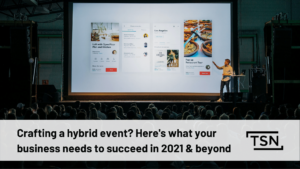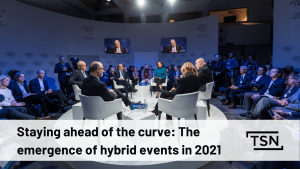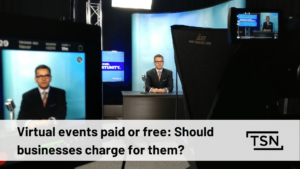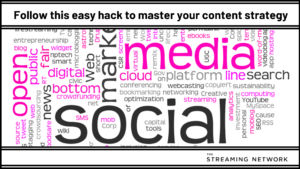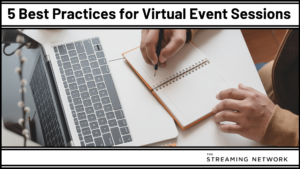How often do you find yourself marketing to what you think is your ideal customer?
You know your product or service better than anyone else. As a result, you know exactly who would be interested in what you’re selling.
In some cases, B2B marketers could miss technicalities. To better know your audience and avoid missing those details, a buyer persona is a great solution.
How To Define Buyer Personas
According to HubSpot, “a buyer persona is a semi-fictional representation of your ideal customer based on market research and real data about your existing customers.”
That sounds great – but why should you start? Let’s say you are trying to increase your brand awareness or want to generate leads. You will want to have a clear picture of the type of buyer who is most likely going to help you reach your goal(s). In the game of paid promotions, where targeting is incredibly important, having a buyer persona will make it easier to target the ideal customer base.
Buyer persona(s) are also great for mapping your content as it allows you to target a segmented audience. For instance, you will have different types of customers at different stages of the market funnel. Use your buyer persona to segment these individuals for more targeted messaging tactics.
What Should You Be Looking For?
Take a look into Google Analytics. Click here to set up an account if you do not already have one.
1. Demographics
Under Customization, click Audience and then Demographics. Adjust your timeline (go back as far as you can) and start by seeing how old your customers are on average.
Collect as much data as you can about your audience to help you build a demographical persona. If you do not have Google Analytics, reach out to your sales team. Ask questions such as:
- What type of industry do my ideal customers work in?
- What kind of companies do they work for? Are they start-ups, or are they B2B firms?
- What position do they hold at their company? Where are they located?
- What’s their income level? There is a problem if you are offering a service worth $15,000 to a brand new start-up without any funding as of yet.
Start by asking big questions and get more specific as you build your buyer persona.
2. Day-In-The-Life
What does a day-in-the-life of your ideal customer look like?
Start interviewing your current customers or leave a feedback form on your website. This is called primary data research. The most important question you should have the answer to is, who does my ideal customer report to, or who reports to them? Often times, the customer we are talking to does not have the buying decision power. They take the information from a sales representative, talk to their manager about it, and then decides whether or not it’s worth their time.
3. What Are Their Challenges?
What are the daily challenges that they come across in their daily lives? More specifically, what are their pain points? And how can you eradicate these pain points? Understanding how exactly your product solves a problem for your ideal customer will help you target and market your service better.
4. Do You Know What Reading Material They Consume?
What do they like to read? What sources do they trust? Start looking at the content that your audience is reading to get a more clear picture as to who they are and what type of information do they like to consume. This strategy can help your own content marketing strategy.
The Finer Details Of A Buyer Persona
A common strategy many marketers like to use when creating buyer personas, is to use a slide deck. Each slide is dedicated to its own persona. Remember, you are building a semi-fictional persona. Another strategy marketers do is name their personas and include a stock image to depict them. For instance, Sally Simpson, the Sales Director. It’s a persona marketing technique literally gives a face to the name.
In doing so, you have a physical reminder of who exactly it is you should be targeting. This is great for PPC purposes, as well as email marketing. Instead of sending a blanket email to your entire leads list, you should be segmenting them by interest to deliver a targeted message.
If you are struggling to create a buyer persona, use our Customer Profile Template as a guide.
Compiling The Data
Earlier, I mentioned a few ways in gathering this kind of data to build these customer personas,
- Leveraging Google Analytics.
- Speaking with your sales team.
- Interviewing Current Customers.
Looking for less invasive research methods? Try these strategies instead:
- Use a survey or poll during your next webinar or email. Ask exactly what people like about your service. The predetermined options with a survey or poll can help paint a more clear picture on what your customer values. This is also the least invasive technique to gather information.
- Go past Google Analytics. Most advertising tools come with a tracking code that sees how a visitor interacts with your site (Facebook – Pixel, LinkedIn – Insight Tag, etc). Go through your Audience Insights to truly understand your customer base.
Let’s Recap
The definition of a buyer persona, as provided by Hubspot, “is a semi-fictional representation of your ideal customer based on market research and real data about your existing customers.”
When creating a buyer persona, you should look into factors such as customer:
- Demographics – how old are your customers? What’s their income level?
- Work environments – how big is their company?
- Day-in-their-life – what does it look like?
- Look into are some of the challenges that they face?
- What kind of sources do they like to read from?
Solidify your buyer persona(s) by creating a slide deck with each slide dedicated to a persona. This forces you to be detailed yet concise. Throw in a stock image and give your persona a name to give life to your semi-fictional ideal customer.
When compiling data for your personas, make sure you are:
- Leveraging Google Analytics.
- Speaking with your sales team.
- Interviewing Current Customers.
- Using a survey/poll in your webinars to see what attendees like about your service.
- Utilizing advertising tools such as Audience Insights (Facebook) to learn the demographics and interests of your ideal customer.
Buyer personas are an enriching technique to learn who your true customers are. Going in-depth to create a persona can help with producing targeted content as well as aid PPC efforts.


